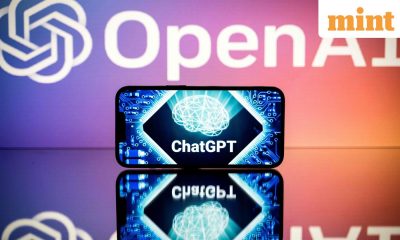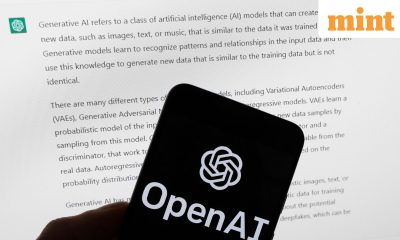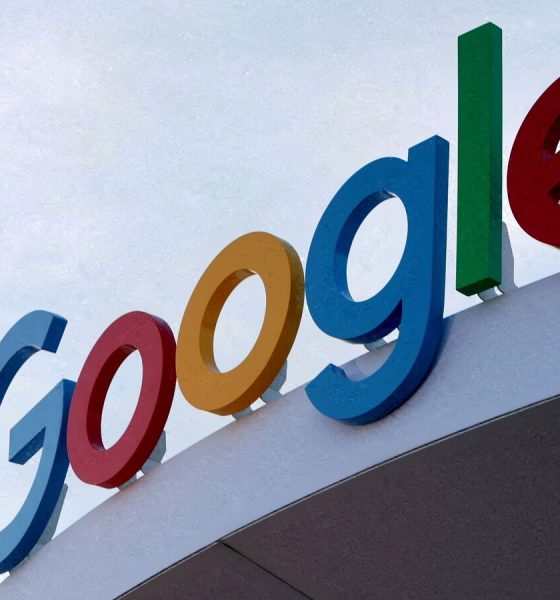
Metaverse
Does Perplexity’s “answer engine” threaten Google? – Crypto News
When Aravind Srinivas was accepted at the University of California, Berkeley, to do a PhD, his mother was disappointed. Like many Indian parents, she wanted him to go to the Massachusetts Institute of Technology. But things worked out after all; on the west coast he interned at OpenAI and Google’s DeepMind, both of which became leaders in generative artificial intelligence (AI). With that experience, he co-founded Perplexity, a generative-AI startup recently valued at $1bn that provides fast, Wikipedia-like responses to search queries. He is an unassuming interviewee, but an ambitious one. His “answer engine” is aimed at competing with Google search, one of the best business models of all time. Think Martin Luther taking on the Catholic church.
Mr Srinivas is a student of disruption. When a podcaster asked him recently to compare the cultures of OpenAI and DeepMind, he explained how the engineer-led, free-wheeling approach of the former disrupted what he called the research-obsessed “very British” hierarchy of the latter (which was founded in London). He resorts to disruption theory when discussing Alphabet, Google’s parent company. Rather than explaining how Perplexity’s business model will enable it to attack the search giant, he uses a celebrated concept outlined in “The Innovator’s Dilemma”, a management bestseller from 1997 by Clayton Christensen, to identify what he sees as Alphabet’s Achilles heel. He is not alone. The innovator’s dilemma has been invoked to explain why Google is threatened by OpenAI’s ChatGPT and by other generative-AI sites such as You.com. The argument is seductive. But it is off the mark.
The dilemma, as presented by Christensen, explains why new technologies cause great companies to fail. If they compete with upstarts, they jeopardise their own standards and brand. If they don’t, they risk falling victim to the next wave of innovation. In a nutshell, the theory states that an incumbent is so good at pleasing its best customers that it would never dream of going downmarket. That gives insurgents an opportunity. They target a niche of the market with initially subpar products. Through relentless improvement, eventually they hit the big time. You can use it to understand how digital photography killed Kodak, and why Apple’s iPhone disrupted not mobile phones, but laptops.
Mr Srinivas brings up the theory to explain why Google’s search business could turn from a blessing to a curse. It costs Google almost nothing when users click on its links. But advertisers bid on the cost per click, providing Alphabet with whopping profit margins. Generative AI shifts the model. First, the results cost more, because AI-related Q&A uses more computing power than search queries. Second, they provide answers, not links, hence less granularity for advertisers. In short, if Alphabet were to abandon search for a Perplexity-like product, Mr Srinivas argues, costs would rise, revenues would plummet, margins would suffer and investors would head for the hills. That is where Perplexity, with no profits to jeopardise, sees something to aim at.
This is plausible in theory, but it is not an application of the innovator’s dilemma. In Christensen’s formulation, the incumbents overlook the insurgents because these start by nibbling at the fringes of a market, not by going head to head. Yet Mr Srinivas has openly thrown down the gauntlet to Google. Upstarts are supposed to win over underserved customers with cheap, scrappy technology. Yet Perplexity, with a subscription model that may eventually include ads, can be more expensive than Google and its answers tend to be far more polished (if not always accurate).
Rather than being a disrupter, Perplexity looks more like an example of what Christensen called “sustaining” innovation—making good products better. There is nothing wrong with that. But it is a game that Alphabet can play, too. It has the researchers and deep pockets to keep improving generative-AI search. It is experimenting with an AI tool called “search generative experience”, and says the computing costs of such queries have fallen by 80% since they were first introduced. It is confident it will be able to use AI to better monetise ads. Meanwhile its search revenues continue to boom; they rose by 14% year on year in the first quarter. Not exactly the start of the Reformation.
In short, Google does not appear to face a dilemma at present. It can compete or not, depending on where its interests lie. Mr Srinivas does a better job explaining Perplexity’s strengths. By gleaning answers from a variety of large language models, both closed and open-source, his product can take advantage of each model’s analytical strengths, as well as their varying pricing structures, to improve performance and lower costs. It is likely to become increasingly conversational. It is not hard to imagine it pairing up with a killer device—think of the earpiece in the movie “Her”, an AI love story.
The winner’s curse
What such a device could be, Mr Srinivas says, is the trillion-dollar question. But he reckons there is a huge hurdle in the shape of Apple’s iPhone. “This is the moat,” he says, picking up your columnist’s device. That is because of the interplay between the hardware and Apple’s operating system, app store and payments platform, which he thinks makes it almost invincible.
Again he may be wrong. Apple may be more exposed to the innovator’s dilemma than Alphabet. It is one of the world’s most reputable companies. It is laser-focused on its best customers (those, say, who can afford a $3,499 augmented-reality headset). It would never risk its brand by offering a cheap, shoddy product. Makers of AI gizmos, from pendants to whatever the Rabbit R1 thinks it is, one day hope to vanquish the mighty iPhone but remain far too flawed for Apple to bother responding to. Sounds like a recipe for disruption.
If you want to write directly to Schumpeter, email him at schumpeter@economist.com
To stay on top of the biggest stories in business and technology, sign up to the Bottom Line, our weekly subscriber-only newsletter.
© 2024, The Economist Newspaper Limited. All rights reserved. From The Economist, published under licence. The original content can be found on www.economist.com
-

 Cryptocurrency7 days ago
Cryptocurrency7 days agoIlluminating progress: Is a $140K income ‘poor’? – Crypto News
-
Technology6 days ago
Crypto Lawyer Bill Morgan Praises Ripple’s Multi-Chain Strategy as RLUSD Hits $1.1B – Crypto News
-

 Blockchain5 days ago
Blockchain5 days agoAnalyst Reveals What You Should Look Out For – Crypto News
-

 Technology7 days ago
Technology7 days agoSamsung Galaxy S25 Ultra 5G for under ₹80,000 on Flipkart? Here’s how the deal works – Crypto News
-

 others7 days ago
others7 days agoGold holds strong at $4,200 as Fed-cut anticipation builds – Crypto News
-
Cryptocurrency1 week ago
Crypto Platform Polymarket Relaunches in U.S. Following CFTC Approval – Crypto News
-

 Cryptocurrency1 week ago
Cryptocurrency1 week agoUK recognises crypto as property in major digital asset shift – Crypto News
-
others1 week ago
Bitcoin Price Forecast as BlackRock Sends $125M in BTC to Coinbase — Is a Crash Inevitable? – Crypto News
-

 Cryptocurrency7 days ago
Cryptocurrency7 days agoCrypto Holiday Gift Guide 2025 – Crypto News
-
others5 days ago
Breaking: Labor Department Cancels October PPI Inflation Report Ahead of FOMC Meeting – Crypto News
-

 Cryptocurrency5 days ago
Cryptocurrency5 days agoArgentina moves to reshape crypto rules as banks prepare for Bitcoin services – Crypto News
-

 Blockchain4 days ago
Blockchain4 days agoStripe and Paradigm Open Tempo Blockchain Project to Public – Crypto News
-
others1 week ago
$12T Charles Schwab to Launch Bitcoin and Ethereum Trading in Early 2026, CEO Confirms – Crypto News
-

 Cryptocurrency1 week ago
Cryptocurrency1 week ago‘Get it done on time’ – Lawmakers push regulators on GENIUS Act rollout – Crypto News
-
Business1 week ago
Crypto Platform Polymarket Relaunches in U.S. Following CFTC Approval – Crypto News
-

 Technology1 week ago
Technology1 week agoWorking on a screen all day? These 8 LED monitors in Dec 2025 are kinder on your eyes – Crypto News
-
others7 days ago
Morgan Stanley Turns Bullish, Says Fed Will Cut Rates by 25bps This Month – Crypto News
-

 Cryptocurrency7 days ago
Cryptocurrency7 days agoFlorida Appeals Court Revives $80M Bitcoin Theft – Crypto News
-

 Cryptocurrency1 week ago
Cryptocurrency1 week agoRipple CTO Shares Hilarious Email from Jed McCaleb Impersonator – Crypto News
-
Business1 week ago
Senator Tim Scott Floats December 17 and 18 For Crypto Market Bill Markup – Crypto News
-
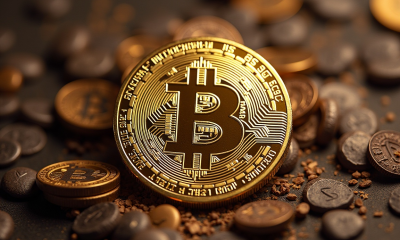
 Cryptocurrency1 week ago
Cryptocurrency1 week agoBTC staking platform Babylon teams up with Aave for Bitcoin-backed DeFi insurance – Crypto News
-

 Blockchain1 week ago
Blockchain1 week agoSolana (SOL) Cools Off After Rally While Market Eyes a Resistance Break – Crypto News
-
others1 week ago
XRP Price Prediction As Spot ETF Inflows Near $1 Billion: What’s Next? – Crypto News
-

 others1 week ago
others1 week agoThe rally to 7120 continues – Crypto News
-

 Blockchain7 days ago
Blockchain7 days agoBitcoin Buries The Tulip Myth After 17 Years: Balchunas – Crypto News
-

 Cryptocurrency6 days ago
Cryptocurrency6 days agoWhy Ethereum strengthens despite whale selling – Inside Asia premium twist – Crypto News
-

 others6 days ago
others6 days agoNasdaq futures hold key structure as price compresses toward major resistance zones – Crypto News
-

 others6 days ago
others6 days agoNasdaq futures hold key structure as price compresses toward major resistance zones – Crypto News
-

 Technology1 week ago
Technology1 week agoTinder says 2026 will be the year of ‘no mixed signals’ as daters embrace clarity – Crypto News
-

 Blockchain1 week ago
Blockchain1 week agoLedger Finds Chip Flaw Allowing Complete Phone Takeover – Crypto News
-
Business1 week ago
Kalshi, Robinhood and Crypto com Face Cease & Desist Order in Connecticut – Crypto News
-
Business1 week ago
What’s Next for Dogecoin Price After Whales Scoop 480M DOGE? – Crypto News
-

 Cryptocurrency1 week ago
Cryptocurrency1 week agoCoinDCX data reveals India’s rising appetite for diversified digital assets – Crypto News
-

 Technology1 week ago
Technology1 week agoCloudflare Resolved Services Issues Caused by Software Update – Crypto News
-
others1 week ago
Colombia Consumer Price Index (YoY) below forecasts (5.45%) in November: Actual (5.3%) – Crypto News
-
Technology1 week ago
Solana Price Outlook: Reversal at Key Support Could Lead to $150 Target – Crypto News
-

 Technology1 week ago
Technology1 week agoFrom security camera to gaming hub: 6 Easy tricks to make your old smartphone genuinely useful again – Crypto News
-

 others1 week ago
others1 week agoCanadian Dollar soars after upbeat labor report – Crypto News
-

 others6 days ago
others6 days agoStocks survive PCE and consumer data – FOMC too? – Crypto News
-

 Cryptocurrency6 days ago
Cryptocurrency6 days agoThursday links: Prediction markets, agent hackers, quantum risks – Crypto News
-
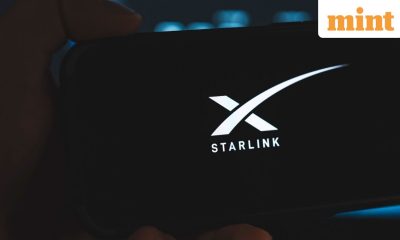
 Technology5 days ago
Technology5 days agoStarlink India pricing revealed: How much does monthly plan cost and what are its benefits? – Crypto News
-

 Blockchain4 days ago
Blockchain4 days agoBMW Helps JPMorgan Drive Blockchain-Based FX Payments – Crypto News
-

 Cryptocurrency1 week ago
Cryptocurrency1 week agoCayman Islands sees rising Web3 foundation activity – Crypto News
-

 Technology1 week ago
Technology1 week agoApple Watch’s latest update drops a lifesaving feature for Indian users: here’s how it works – Crypto News
-
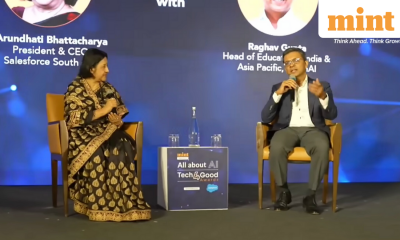
 Metaverse1 week ago
Metaverse1 week agoBetter Tomorrow: How OpenAI is reimagining education and inclusion for the digital age – Crypto News
-
Business1 week ago
Is ZCash Price Set for a Bigger Rally After Its 10% Surge on the Bitget Listing? – Crypto News
-
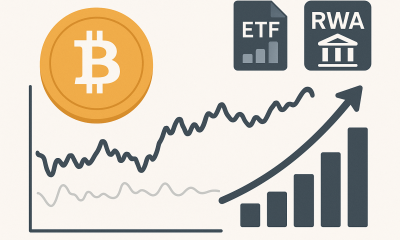
 Cryptocurrency1 week ago
Cryptocurrency1 week agoGlassnode report reveals Bitcoin’s growing stability amid ETF activity and RWA expansion – Crypto News
-
others1 week ago
$1.3T BPCE To Roll Out Bitcoin, Ethereum and Solana Trading For Clients – Crypto News
-
Technology1 week ago
Peter Brandt Hints at Further Downside for Bitcoin After Brief Rebound – Crypto News
-
others7 days ago
United States Consumer Credit Change came in at $9.18B, below expectations ($10.5B) in October – Crypto News





